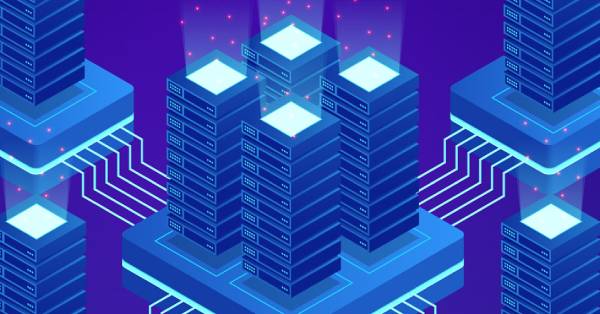Insights
Integrated Business Process Engineering to Unlock True Potential of Digital Transformation
October 26, 2020
In response to the rapidly changing business environment, the last few years have seen organizations rapidly accelerate their digitalization journey. This transition has been necessitated by the need to stay competitive in an increasingly aggressive market and adapt to the evolving customer needs and expectations. For one, customers’ preferred channels of communication are shifting from physical to digital, and to support and leverage this, organizations need to establish newer ways of data collection, analysis, and visualization and ensure a safe, reliable, consistent customer experience across channels.
The digitalization spree has also been exacerbated by the ongoing COVID-19 pandemic, which has made remote working the new normal, requiring organizations to hastily add capabilities to enable data access and virtual collaboration. In many cases, where the alternative was a near-complete shutdown of the business, organizations rushed to implement band-aid fixes with little planning and forethought. However, even prior to the pandemic, employees had been seeking flexibility both in terms of how and where they work and the tools and solutions accessible to them to increase productivity and improve output.
The pace at which the landscape has been changing has forced organizations to implement business process changes to fix emerging issues without adequate preparation or comprehensive planning. However, these unsystematic, piecemeal measures often do not deliver the overall impact organizations expect and do not justify the cost they entail. This realization has prompted many organizations to take a long, hard look at the current state of their operations and work to clear barriers or roadblocks with the objective of improving efficiencies and ensuring that their business processes are synchronous.
While implementing mass remote working, for instance, one of the major challenges that organizations have faced is in ensuring that their people have continued access to data in a seamless, secure manner. Businesses today rely heavily on data for nearly all functional areas, including marketing, sales, customer service, finance, and management. To enable remote work, the first step for many has been migrating data assets and processing capabilities to cloud platforms.
From a business decision-making perspective, data analytics and visualization are essential requirements, as is data governance to ensure that the organization’s data is accurate, complete, valid, and fit-for-purpose. The ability to collaborate with co-workers on projects remotely has also become essential over the past few months. While most organizations already have the bare-bones of data access in place by now, many are still miles away from their desired target state – one where their data pipelines are streamlined, adaptive, agile, and protected.
Needless to say, data and data management have emerged as key factors in enabling sustainable remote operations. In order to make data and information accessible to business users, organizations may need to redesign their data infrastructure and architecture, adopt newer tools and solutions, and modify business processes to unlock the data-related capabilities they now need.
Over time, incremental changes may not be the most efficient way of managing digital transformation, as evidenced over the past few months. While band-aid fixes and workarounds may address a particular issue in the short-run, an Integrated Business Process Engineering (IBPE) approach is necessitated for long-term, sustainable solutions. A holistic refresh will increase the effectiveness of an organization’s business processes and uncover new opportunities for better analytics and reporting. Moreover, this approach will allow organizations to measure what they want to accomplish, so they can continually monitor their progress and assess how their investments are bearing fruit.
Integrated Business Process Modeling for Transformative Change
Integrated Business Process Engineering (IBPE) is the process of understanding an organization’s objectives, pain points, and current state and using these as a foundation to define and deliver a target state across all dimensions of organizational existence, including people, processes, systems, and information. Zelusit provides a roadmap that organizations can use to navigate their path towards transformative change in their data and data management processes. The key elements of our methodology include:
Understanding the organization’s goals, objectives, and pain points: We start by facilitating working sessions with the organization’s Senior Leadership Team (SLT) to capture the organization’s governing principles, values, goals, and challenges. This step also gives us an understanding of their key ongoing initiatives, the business drivers behind the change, organizational readiness, and the success criteria they have in mind for the transformation. Using these inputs, we then prioritize objectives for the transformation, define timeframes and milestones, anticipated benefits and ROI, and identify potential risks.
Understanding current state of business processes: The modern business process is more than just workflows, systems and people who execute them – it is an ecosystem where various components interact in a multi-factor environment. Using our proprietary Integrated Business Process Modeling methodology (IBPM), we capture these interactions in their entirety.

The integration between Operations, Governance, and Technology lies at the core of modern organizational and process design. The purpose of our IBPM methodology is to create an accurate, complete, and structured logical representation of how the organization operates and creates internal and external value.

This step is typically broken down into several levels, starting with understanding the value streams (L1), functional level of process modeling (L2), deeper level of process modeling (L3) and then, if needed, digging further into procedures (L4) and tasks (L5). Broadly, some of the activities we undertake at L1 and L2 include identifying primary and supporting functions and processes, identifying major human and non-human (systems, bots, etc.) actors for each function and process, operational dependencies, ownership and stewardship for each function and process, major data and information assets, external information inputs and outputs, constraints, etc.
Each of these levels involves similar activities but with an increasing level of detail. The result of this methodology is an integrated process map, which shows all process components and their dependencies and interactions at a glance.

Defining Target State and Managing Change: Process modelling is a foundational step to identify the impact of the change in business operations triggered in response to the pandemic. While some directly and indirectly impacted processes may already be obvious, for organizations looking to streamline their data and data management processes to restore efficiency and ensure that the integrity of the process ecosystem is maintained, it is important to accurately measure the impact of change on all process components, and accordingly plan for change management.

In order to enhance business capabilities and arrive at the target state, several foundational components need to change. To enable remote working, for instance, this foundational change may manifest in many different forms, including People (changing role definitions, responsibilities, structure, location), Systems (functionality, capabilities, performance, security, accessibility, integration), Workflows (procedures, tasks, decision points, information flows, resources, dependencies, outcomes, exceptions), Data (repositories, transmission, sources, availability, metadata), and Controls (rules, SOPs, policies, compliance, security, authorization).
Once the target state is defined, a change management plan needs to be built to deal with changes to the process ecosystem.

Creating KPI framework to measure outcomes: To make transformation successful, it is imperative to have in place a KPI framework for the measurement of success. Corporate and departmental KPIs are derived from the overarching strategy, objectives, and drivers, and these can further be used to narrow down to a “Departmental Scorecard”, which in turn fuels the operating plans.
For instance, to address the corporate goal of increasing shareholder value, one of the business goals might be increasing revenue generation. A key driver for this may be to improve sales performance keeping in mind that the new ways of doing business do not allow in-person customer engagement. KPIs to measure this may include conversion of Marketing Qualified Leads (MQLs) to Sales Qualified Leads (SQLs) and SQLs to Opportunities, monthly revenues, profitability or repeat sales. From a technical perspective, enablers of these KPIs may include upgrading to a new CRM, data governance to ensure that the sales team has access to good quality data, systems to create a 360-degree view of each customer, and newer touchpoints to collect leads (eg: webinars, apps, etc.), since there might be a shift in how their prospective customers engage with their business. Non-technical enablers may include training of sales staff on the use of the new technology solutions, revisiting roles and responsibilities, among others.
Progress on the sales “Departmental Scorecard” may present as an increase in monthly revenue, repeat purchases by customers or better conversion of MQLs to SQLs. Lagging indicators can give great insight into further changes that may be needed to achieve the organization’s target state.
To keep pace with the rapidly evolving business landscape, organizations have accelerated their digitalization journey, which in turn has escalated the need for data and data-related capabilities to support remote working and adapt to newer ways of customer engagement, product/service promotion, regulatory compliance, and even human resource management. Zelusit’s Integrated Business Process Engineering methodology can be applied in the case of any major organizational change or implementation. It follows a simple process of identifying the current state and the desired state and preparing a roadmap that will take you there.
Organizations often benefit from an objective, third-party view into their business processes and barriers, and where transformation involves a high-degree of data and data management related change, Zelusit offers consulting services to help organizations identify, implement and embrace the changes that the new state brings. Organizations that do not have internal technical expertise may also choose to bring on board experts to guide them on newer technical solutions that could serve as enablers to help them deliver on their KPIs. While change is ongoing, for major transformative endeavors like the one necessitated by the pandemic, in the absence of a clear Business Process Re-Engineering roadmap, organizations may run the risk of implementing directionless changes that do not translate into the expected outcomes, or may not deliver benefits in the anticipated timelines.




